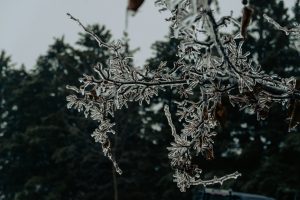Potential Evapotranspiration: Extreme Days in Eastern WA
This piece represents a follow-on to previous work focusing on summer seasonal mean trends in potential evapotranspiration (pET) in eastern Washington state (Bond and Bumbaco 2015). Our primary objective is to show how yearly counts of high pET days have varied since the late 1980s.
Read moreSoil Moisture Contents in Washington State
As the readers of this newsletter are well aware, and for that matter everyone that was paying any kind of attention, the wet season last fall got a late start. Moreover, almost all of Washington state has received less precipitation than normal since the beginning of the calendar year, with the exception being a small region in the central portion of the state near the Columbia River.
Read morePNW Water Year 2022 Impacts Assessment
The Pacific Northwest (PNW) Water Year 2022 Impacts Assessment is now available! Funded by the NOAA National Integrated Drought Information System, and produced through a collaboration of regional entities, this assessment summarizes the water year conditions and related impacts and responses by different sectors.
Read moreWinter Precipitation Variability in Washington State
The last few months have featured considerable fluctuations in precipitation across WA state relative to seasonal norms. While such fluctuations have certainly occurred in the past and will continue to be part of our climate, they serve as a good excuse for taking a quick look at some of the observed temporal and spatial variability in winter precipitation in WA state.
Read moreFreezing Rain in Washington State
Most everyone in the Puget Sound region on 23 December 2022 must have been impressed by the freezing rain that occurred that day. This event featured extremely slippery roadways and outside walkways; at least no one we have spoken with recalls a time when it was more treacherous to get around.
Read moreWhipsaw: From an Exceedingly Warm October to a Cold November 2022
As described in this newsletter, WA state experienced unseasonably cold temperatures in November 2022 after record warm temperatures in the previous month. OWSC has received a variety of inquiries about the rapid transition from summer to winter this year.
Read moreThe Near Endless Summer of 2022
After a very wet and cool spring, the Pacific Northwest had an unusually long stretch of warm and dry weather in 2022. The lack of rain was especially pronounced in western Washington, with many locations recording record low totals for the months of July through September.
Read moreTiming of Seasonal Changes in the Weather of Washington State
This corner of our newsletter has recently concerned the seasonality of weather events in Washington state, and we continue in a similar vein in the present edition. More specifically, we consider average changes in temperature and mean precipitation on a daily time scale over the course of the year for selected locations in Washington.
Read moreReady for Fall Rains?
This piece is intended to complement last month’s piece on the decline of the frequency of heat waves in WA state during the late summer. More specifically, here we describe how soon we can expect to begin enjoying our fall rains, based on historical data.
Read moreFrequency of Hot Temperatures in Summer
This month’s highlight is inspired by the unusually long-lasting heat wave in WA that occurred during the last week of July 2022. We were interested in how the frequency of hot temperatures, in terms of not just maximum but also minimum values, changes over the latter part of summer.
Read more

